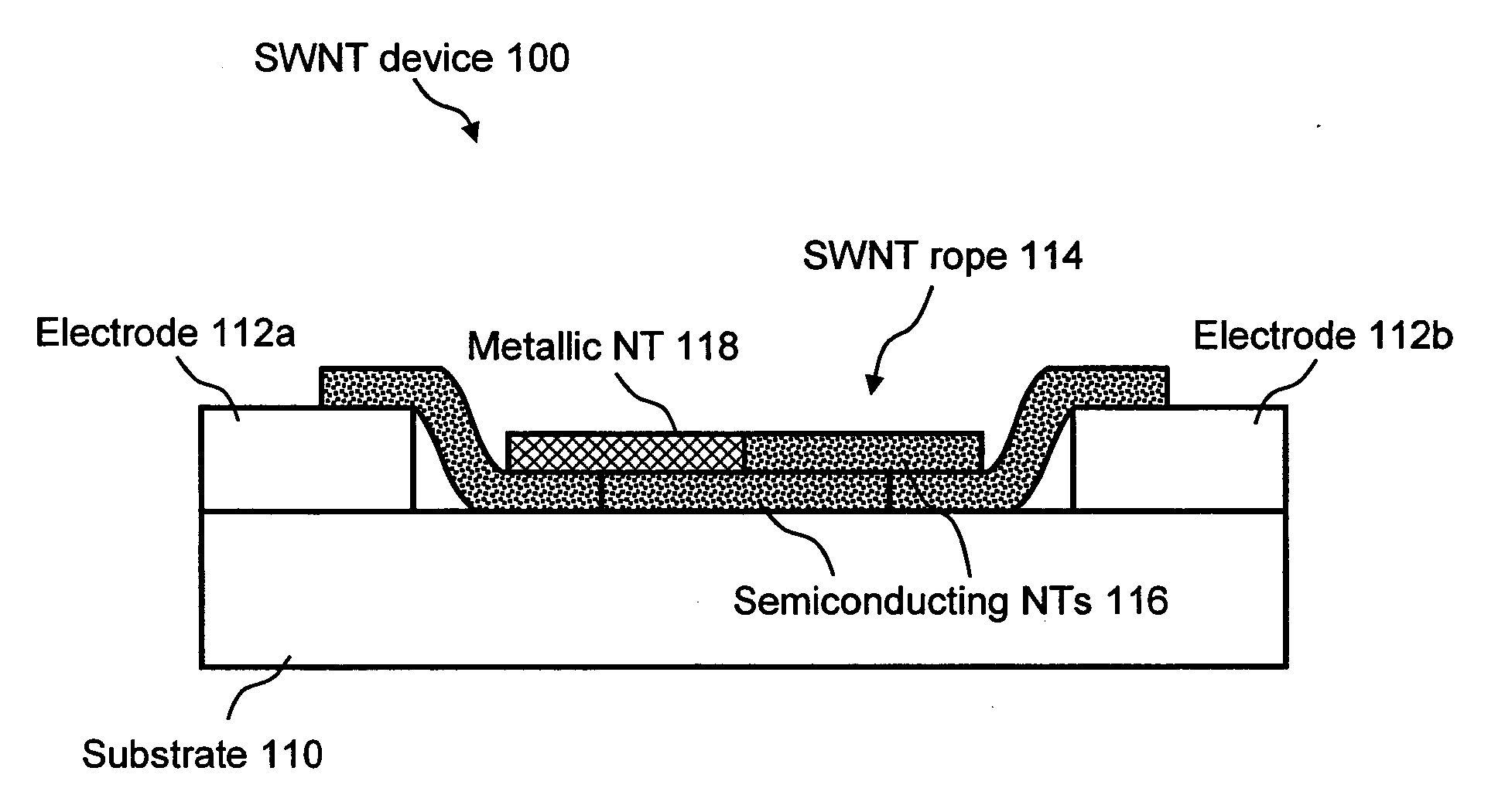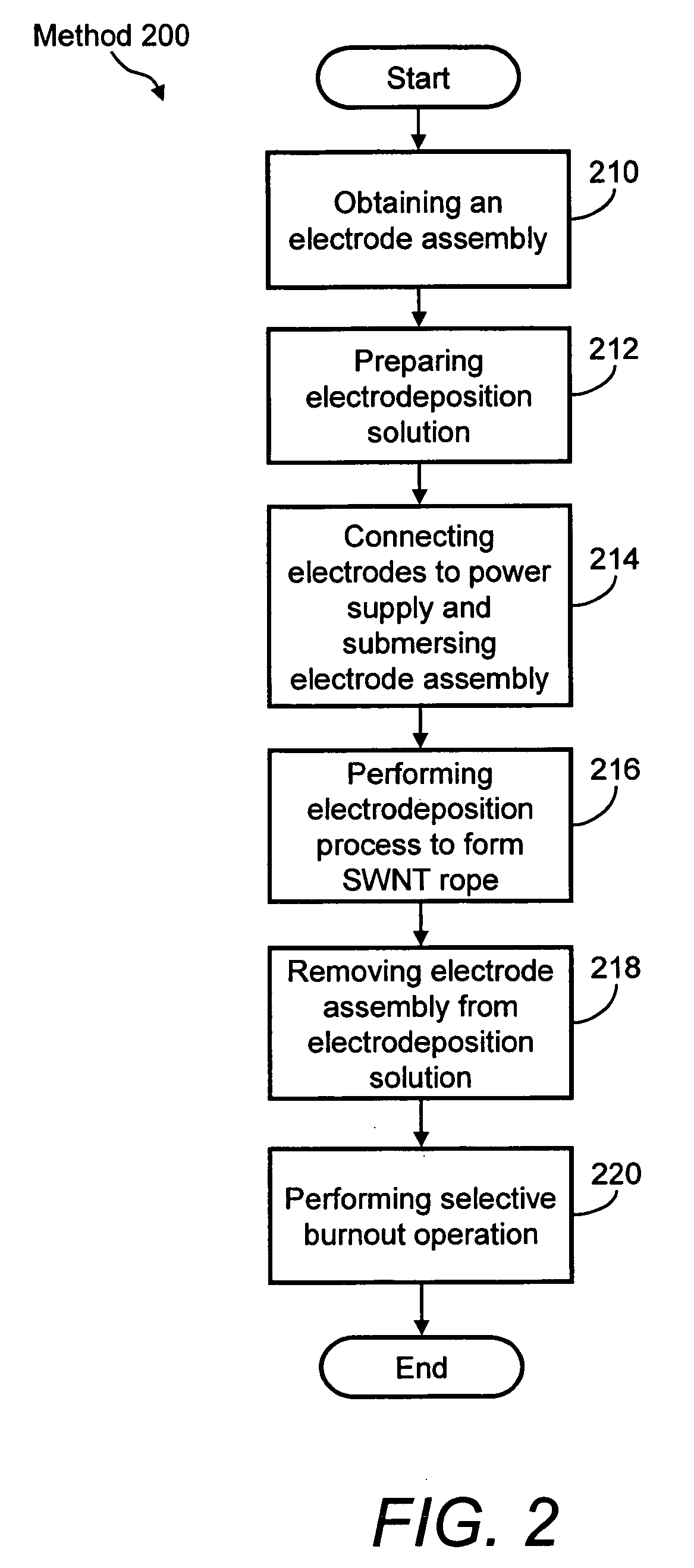Carbon nanotube-based electronic devices made by electrolytic deposition and applications thereof
an electronic device and carbon nanotube technology, applied in the field of carbon nanotube-based electronic devices, can solve the problems of lack of consensus in the industry, inability to speed up the process sufficiently to make billions of transistors practical, and inability to meet the needs of industrialization, etc., to achieve efficient and cost-effective effects
- Summary
- Abstract
- Description
- Claims
- Application Information
AI Technical Summary
Benefits of technology
Problems solved by technology
Method used
Image
Examples
Embodiment Construction
[0035]FIG. 1 illustrates a side view of a single-wall carbon nanotube (SWNT) device 100 (not drawn to scale) in its simplest form in accordance with a preferred embodiment of the invention. More specifically, the structure of SWNT device 100 includes a substrate 110, upon which is deposited a pair of electrodes 112, e.g., electrode 112a and electrode 112b. Additionally, an SWNT rope 114 is deposited upon substrate 110 between electrode 112a and electrode 112b and electrically connected thereto. SWNT rope 114 can be formed from a mixture of semiconducting nanotubes (NTs) 116 and isolated metallic NTs, such as metallic NT 118. Semiconducting nanotubes NTs 116 are carbon nanotubes that exhibit typical semiconductor current-voltage behavior and metallic NTs 118 are carbon nanotubes that exhibit ohmic current-voltage behavior. Single nanotubes which are semiconductive can also be used to form this device.
[0036] Substrate 110 can be formed from any electrically non-conductive material th...
PUM
| Property | Measurement | Unit |
|---|---|---|
| sizes | aaaaa | aaaaa |
| wavelength | aaaaa | aaaaa |
| wavelength | aaaaa | aaaaa |
Abstract
Description
Claims
Application Information
 Login to View More
Login to View More - R&D
- Intellectual Property
- Life Sciences
- Materials
- Tech Scout
- Unparalleled Data Quality
- Higher Quality Content
- 60% Fewer Hallucinations
Browse by: Latest US Patents, China's latest patents, Technical Efficacy Thesaurus, Application Domain, Technology Topic, Popular Technical Reports.
© 2025 PatSnap. All rights reserved.Legal|Privacy policy|Modern Slavery Act Transparency Statement|Sitemap|About US| Contact US: help@patsnap.com



